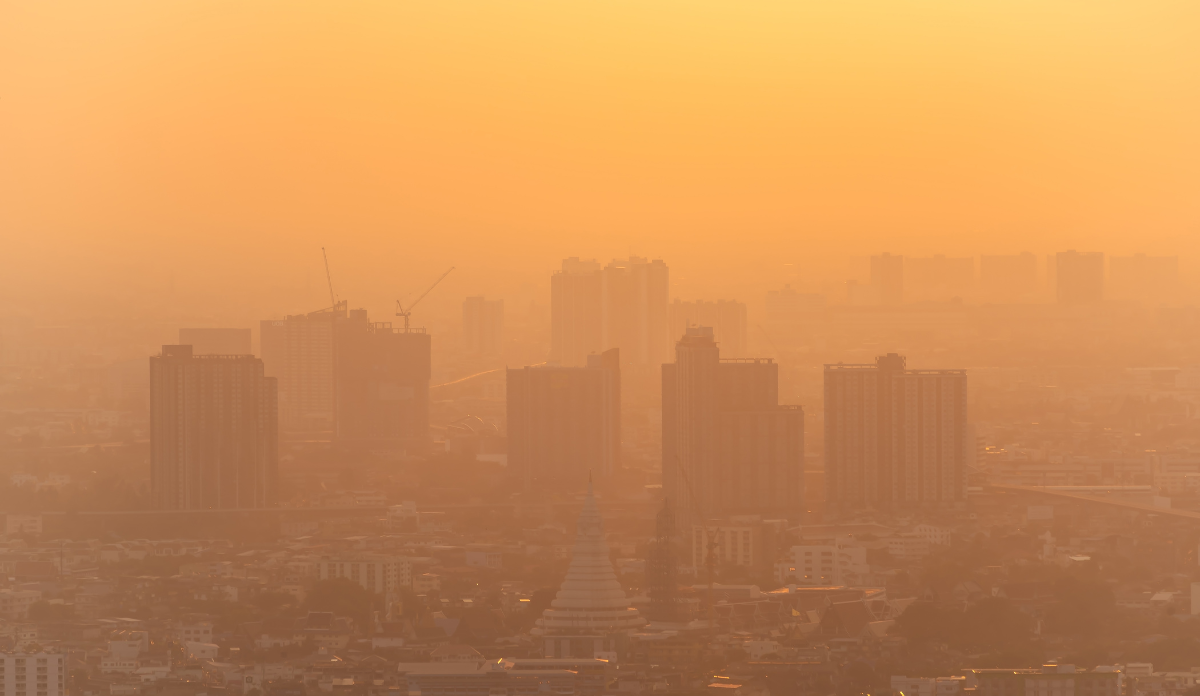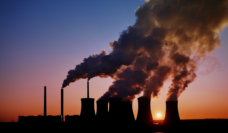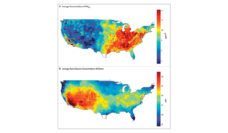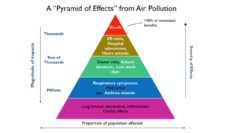Depending on who you are and where you live, policies made decades ago have shaped your exposure to air pollution. The systematic and institutionalized discrimination based on race and socioeconomic status have created a landscape where Black and low-income communities breathe more hazardous air than other Americans.
Many Black Americans have been pushed through discriminatory redlining to buy houses in neighborhoods where environmental risks abound. These areas often had nearby industrial facilities or hazardous waste sites polluting the air and water. A higher concentration of roadways and pollution-emitting facilities, like factories and waste sites were then built in Black or low-income communities. As a result, urban neighborhoods that were subject to redlining almost 100 years ago have higher levels of air pollution today.
In January 2023, the Environmental Protection Agency (EPA) announced it was considering new standards for safe levels of particulate matter 2.5 (PM2.5) in outdoor air. PM2.5 can cause serious health problems when inhaled. If the EPA tightens the standard, the health of all Americans will improve, but some communities will benefit more than others.
Kevin Josey and colleagues evaluated the potential impact of adopting stricter standards for PM2.5 exposure on premature death in different communities. They wanted to know how the proposed standard change would affect Americans, given the country’s intertwined history of discrimination and air pollution exposure. The researchers linked data from more than 73 million Americans enrolled in Medicare from 2000 to 2016 and estimated their different exposures to PM2.5 by race and income level.
Implementing a stricter standard doesn’t directly decrease the amount of PM2.5 in the air, but it sets into motion a series of important policy steps.
Inhaling PM2.5 is dangerous as it can penetrate deep into the lungs and bloodstream. Exposure can lead to respiratory and cardiovascular diseases like asthma attacks and bronchitis. Prolonged exposure can increase the risk of premature death. Implementing stronger regulations that lower the level of PM2.5 in the air would reduce the risk of premature death for all Americans. Black and low-income Americans, however, would reap the most benefits.
EPA standards dictate the maximum amount of various substances are permitted in one cubic meter of air, on average. The current standard for PM2.5 is 12 micrograms per cubic meter. If the standard is lowered from 12 to 8 micrograms, the mortality rate for high-income White adults would decrease by 4%. The same change would result in a 7% reduction for high-income Black adults and a 6% reduction for low-income adults, both White and Black.
Implementing a stricter standard doesn’t directly decrease the amount of PM2.5 in the air, but it sets into motion a series of important policy steps. The EPA monitors PM2.5 levels around the country bringing enforcement actions against any parties (states, counties, or private industry) that violate the new standard by emitting too much PM2.5. If a state’s level of PM2.5 is above the standard, the state is required to develop plans and adopt laws to clean up its air. These plans could resemble California Governor Gavin Newsom’s 2022 plan to restrict and ultimately ban the sale of gasoline-powered cars, a major source of PM2.5 emissions, in the state.
The researchers recommend that the EPA adopt the strongest restrictions on PM2.5 to safeguard vulnerable populations, ideally lowering the standard to 8 micrograms per cubic meter or less.
Photo via Getty Images














